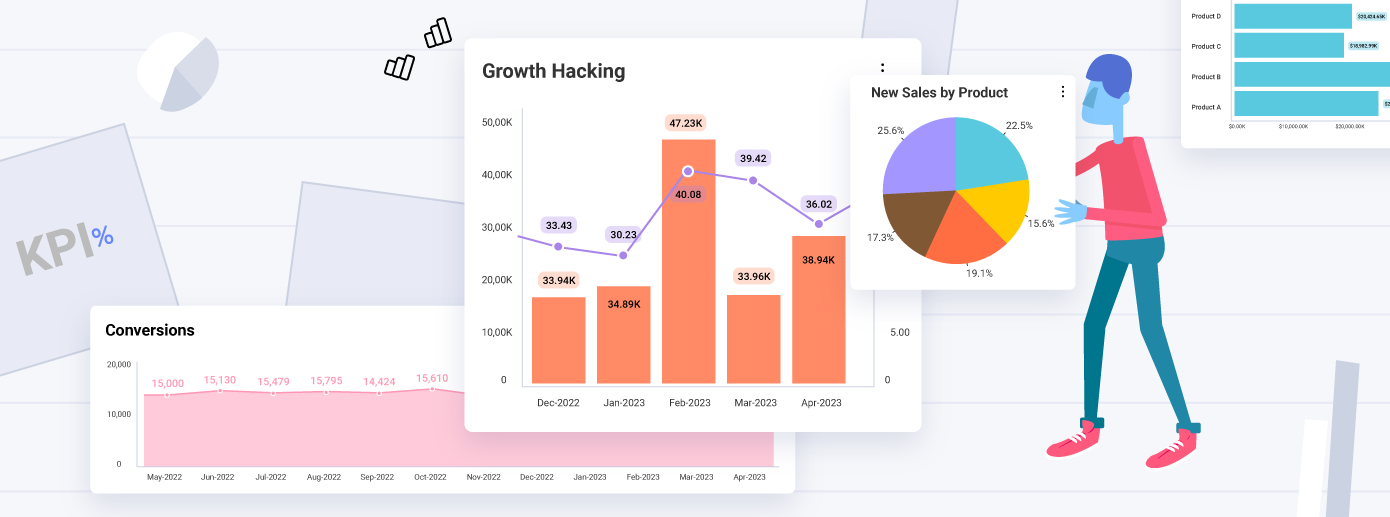
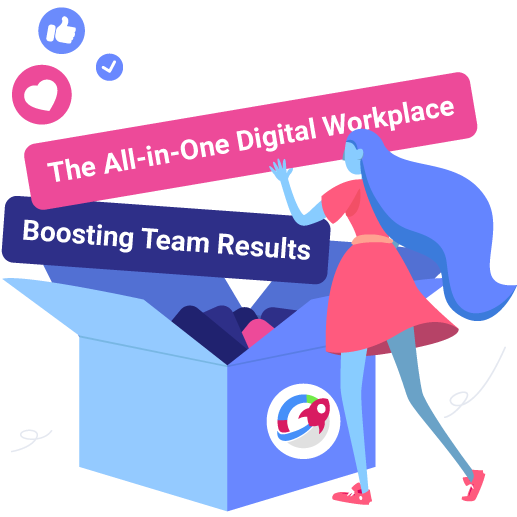
Becoming a Data-Driven Company: Why It’s So Important
Data-driven is a model of behavior that cherishes data in the most productive way. It's what aligns teams around the best decisions and eliminates errors along the way. So let's talk about how to make your company data-driven.
Executive Summary:
Data-driven is a model of behavior that cherishes data in the most productive way. It's what aligns teams around the best decisions and eliminates errors along the way. So let's talk about how to make your company data-driven.
Being a data-driven company is an undeniable need – if the said organization wants to keep up with the times. According to a recent study, by 2025, 200+ zettabytes of data will be in cloud storage around the globe, and in 2020, it was found that every person created at least 1.7 MB of data per second.
The power of the data-driven enterprise is undeniable, so adopting a data-driven culture for your company is like building the wings for a very important flight.
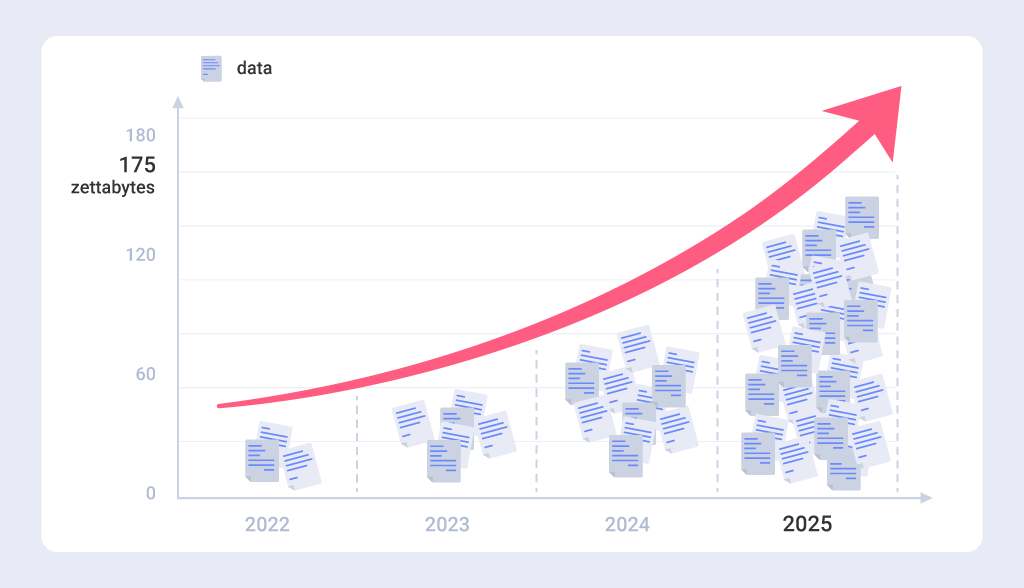
What Is a Data-Driven Company
A data-driven company is one that always strives to follow a model of behavior that puts data at the center of any decision. The decision-making process of such an organization is what drives forward business plans, new ideas, and good outcomes in the future. A data-driven company also applies this principle to any department and team within it, with no exception.
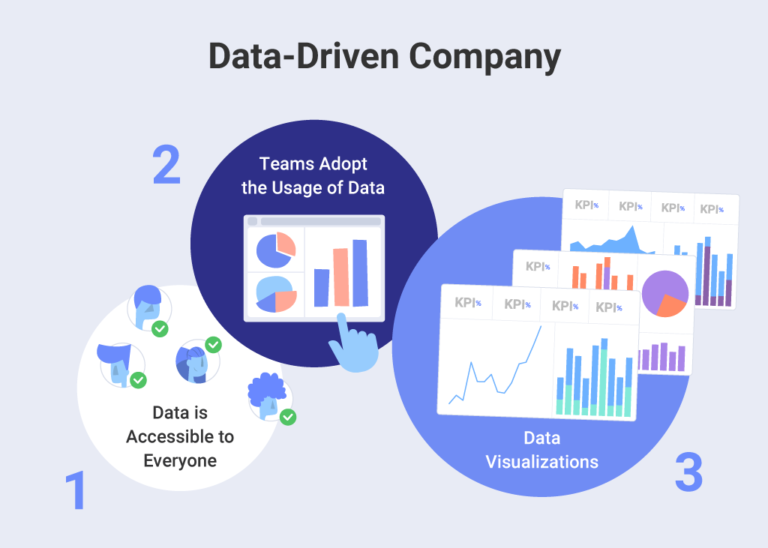
A data-driven company takes full use of the gathered data, processes it with the right tools, and drives actionable insights from the results. To make sure that happens, the company strategy must include the following steps:
- Make sure data is accessible to everyone, eliminate data silos and expand data usage across all levels in the organization
- Top-down adoption of data mindset must be a priority, with high-level managers leading the way by example so their teams adopt the same way of efficient usage of data
- Encourage data literacy in any way and with any tool you can, so data can be processed fast and easy, with insights drawn immediately – preferably, with data visualization
Of course, these are not the only important components of a data-driven strategy across an organization, but without them, it simply won’t be able to happen efficiently.
Why Is It Important for Organizations to Be Data-Driven
The importance of a data-driven mindset for an organization is always tied to “what comes next”. Data helps with all of that, including future investments.
Organizations choose to adopt a data-driven culture by realizing the importance of:
- Better efficiency of processes: with data, processes are improved and core competencies are enhanced, including solving potential problems that are seen beforehand thanks to data insights
- Better customer satisfaction: data shows in what area your customer service and offering needs improvement, so you can achieve better results, grab more attention, etc.
- Data is the best way to find new opportunities when researching how to grow a company’s revenue
- Data reveals trends you’re looking for, resulting in improving strategy and getting ahead of the competition
- Data improves collaboration, helping the team stay on the same page and drawing from data for making decisions keeps the errors at a minimum
Data-driven companies are relying on data analytics and not intuition, which drives forward transparency and trust within the team to take them one step ahead in the market.
How Can a Company Adopt a Data-Driven Culture
Тhe data-driven culture should be looked at as a whole ecosystem of data-centric behaviors. To lean on data in the right way and help your team perform according to facts and insights, there are several steps you need to consider.
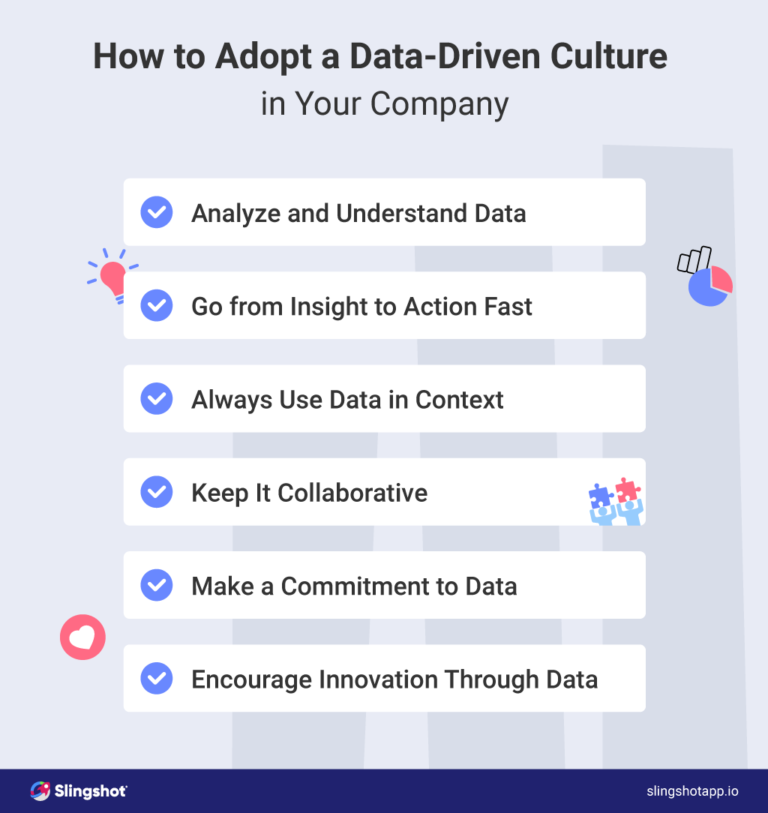
Analyze and Understand Data
That means staying on top of the accumulated data relevant to your use case, using business intelligence tools that provide you with dashboards and easy access to insights
Make It Possible to Go from Insight to Action
Create a process that gives your team the necessary tools to guide them from insight to action in second, without the need to sift through enormous data quantities.
Use Data in Context with Data Catalog
To stay on top of all current data, especially when it comes to keeping up with many projects, it’s a good idea to depend on data catalogs and track information easily, per topic or department, quickly and efficiently.
Keep It Collaborative
Data should be an asset for everyone – by uniting it in one place and helping your team have it in the context of their work, the key metrics they should be following are easily accessible, saving time and keeping all current tasks united on the same goal.
Make a Long-Term Commitment to Data
Besides making sure data is a mindset from the top down in an organization, everyone should make sure they follow the accurate information, educate themselves on using data-driven visualization tools, and always go to data as the source of truth.
Encourage innovation through data
If you’re going to experiment – do it through data insights. Analyzing the right metrics can bring the right opportunities and minimize the risk for any innovation. Data is innovation’s best friend when it comes to assessing potential blockers, issues, and resources.
Always keep in mind that data can only make an impact if it’s incorporated into а data-driven, top-to-bottom organizational strategy.
Tips to Become a Data-Driven Company
Every organization that strives to implement a data-driven approach and call itself a data-driven company must follow a strategy that moves towards this goal. With a data-driven culture, every time a company acts, it’s got to be based on data insights. So let’s see the tips to becoming that.
Push Goals Forward With Data
Let data be your guide and not just the final result of something. With campaigns, data can be the beginning, middle, and end of the road that gets you to the realization of the goal. Use dashboards to always check the numbers and let them answer the necessary questions, to improve your outcomes.
Let Everyone at Data
To be a data-driven company, your team should know data and use it. That doesn’t mean they need to be data scientists – but in every possible opportunity, the relevant data should be checked out, to inform their next steps and give them perspective on how they’re doing in their job. All teams in all departments should be aligned around data and work toward achieving the metrics that matter.
Peek Into the Future With Data
To be a data-driven company, you need to take action based on data predictions – and that means, acting on predictions for the future. It sounds a bit science-based, but it’s simply feeding data into your process of work daily, so it informs your decisions. That means not following blind intuition, but trusting the facts that tell you why something happened – and why something didn’t.
Encourage Data Tools
Invest in tools that make data easily processed – that will help your team grasp it in one look, share it among themselves, and really work and collaborate around it. Data visualizations are the best way to translate collected data, fix mistakes and get to the right knowledge, faster.
Business Metrics for Data-Driven Companies
Following the right metrics means always staying on top of the current most important information your team needs. Assessing it, analyzing it and drawing from it form the approach to data every data-driven company should have.
As business metrics go, we can classify them into three broad categories.
Revenue Metrics
Refer to sales and marketing information that gives perspective into customers, opportunities, adjustments needed, campaign success, etc.
Profitability Metrics
These metrics refer to efficiency, production, and operations, helping companies assess if their strategy is helping them deliver the best products or services.
Risk Metrics
They have to do with tracking potential dangers and risks for the company and counteracting them whenever possible.
Metrics can also be looked at as traditional and dynamic.
Traditional Metrics
In these metrics stands the financial and accounting information that should be followed, as well as the cash flow, profits and losses, shareholder equity registers, and others.
Dynamic Metrics
Here we have metrics that can change greatly within a set time interval, for example, a month or even less. A data-driven approach in following these metrics gives a better oversight on everything about a company’s campaigns, products, sales, transactions, etc.
When choosing which metrics to analyze, companies first put them into one of the first three categories (revenue, profitability, or risk) and then determine if it’s a traditional or dynamic metric. With the help of the right tools, they can then draw the insights that bring the most insight into what has happened until now and what needs to happen next.
Transforming Your Company with Data – Slingshot
To transform your company into a truly data-driven organization, you will need to use the right tools that bring data to life and let you draw from its power.
Slingshot is an all-in-one digital workspace that carries the processes your team goes through every day through the prism of data. In choosing Slingshot, you receive:
Data Sources
In Slingshot, you can quickly connect to your different data sources and create beautiful dashboards within minutes, which then teammates can share and use for analysis and data-driven decision making. They are all kept in the same place together with your files, documents, assets and conversations.
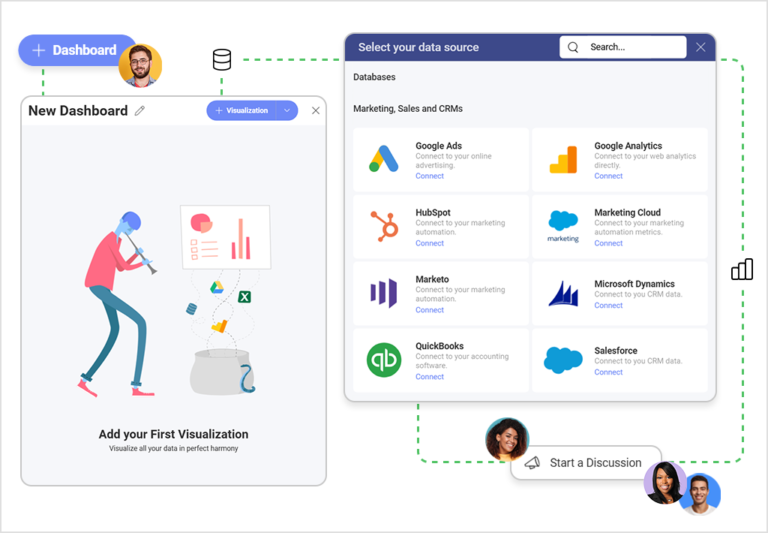
Data Visualization
Data visualization plays a significant role in the data analysis process. To use data visualization smartly is not hard at all – you can check out how to create your first dashboard in Slingshot in detail in this article.
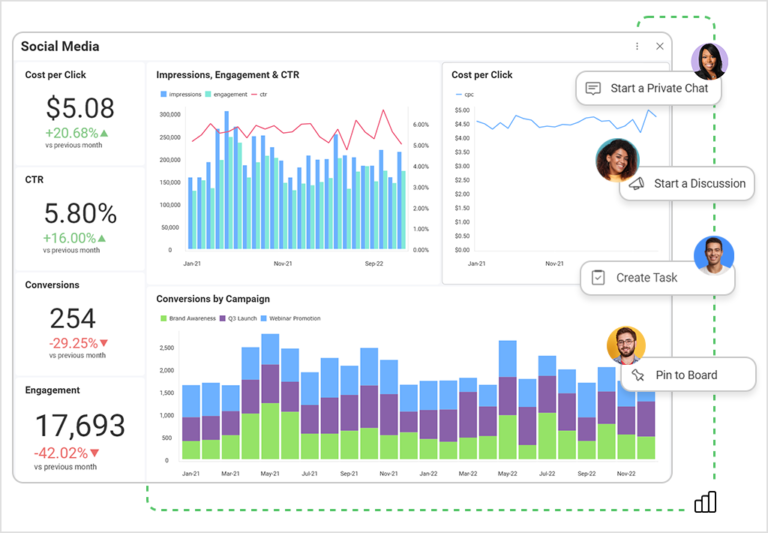
Big Data
Slingshot supports Google BigQuery, adding significant speed in processing big data with Analytics, allowing for usage of huge datasets in seconds.
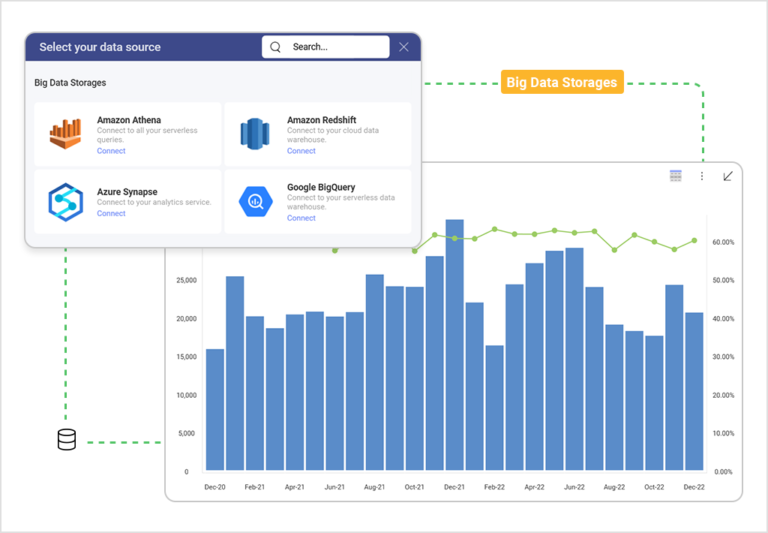
Data Catalog
Slingshot’s data catalog functions include:
- ML-powered automation capabilities that add business context to technical metadata
- Ability to assign roles and responsibilities to make sure assets are maintained by the right users
- Data certification to certify datasets, metrics/KPIs, and reports to promote the highest quality of data in the data catalog
- Collaboration features like chat/discussions in the right context of a campaign, workspace, project, etc.
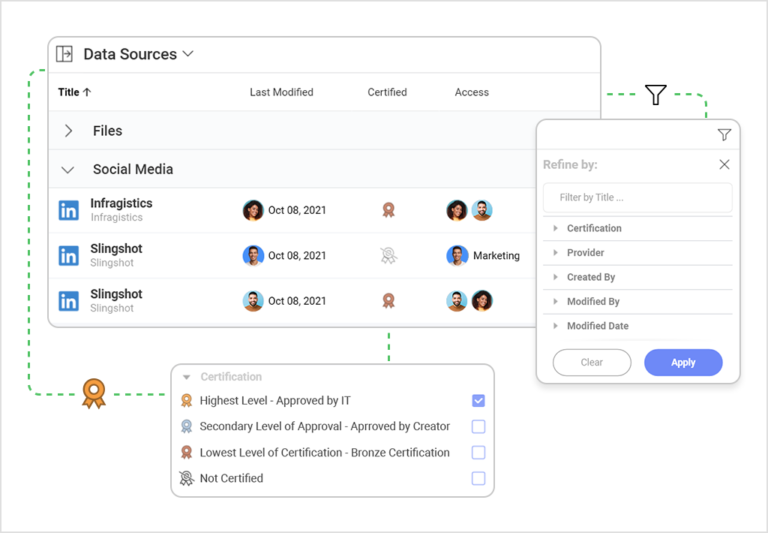
Try Slingshot for free and see for yourself how it can help you leverage actionable insights all while making it easier for your team to utilize data, cultivate a data-driven culture and improve productivity.
Related Articles
Ready to grow your business 10x with AI decision-making?
Request a Free Demo of SlingshotSHARE THIS POST





